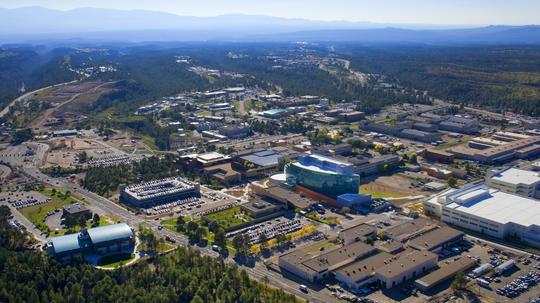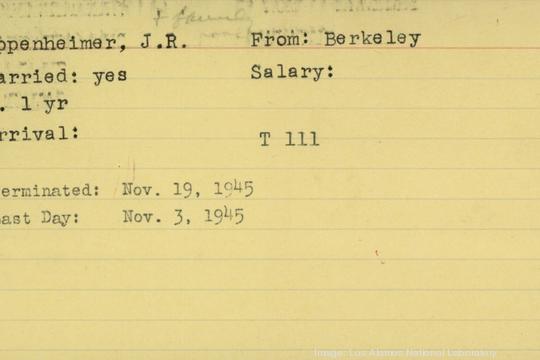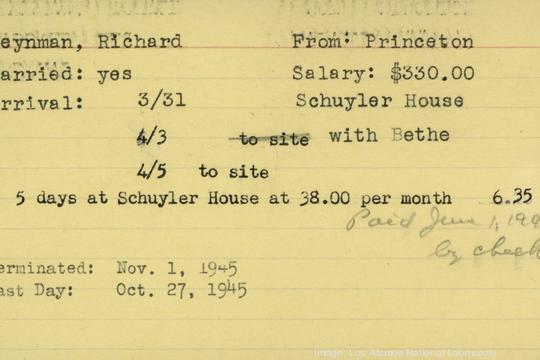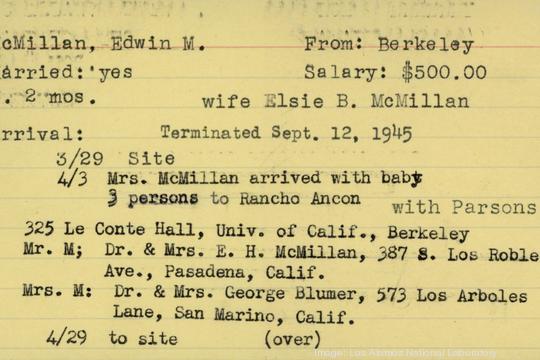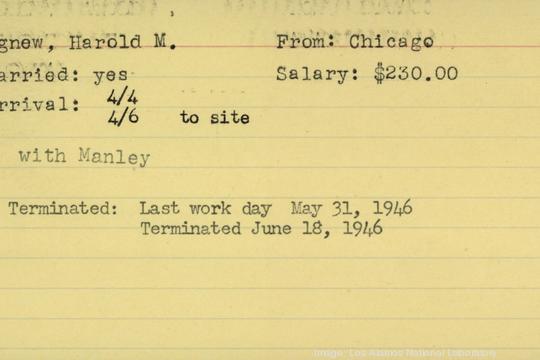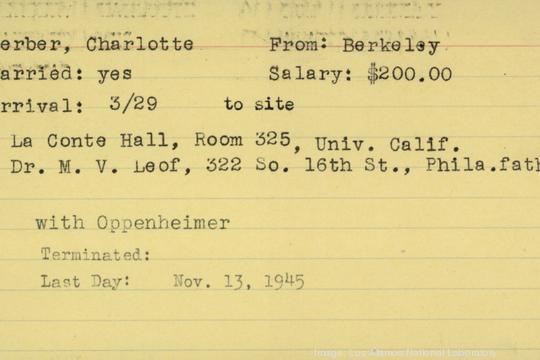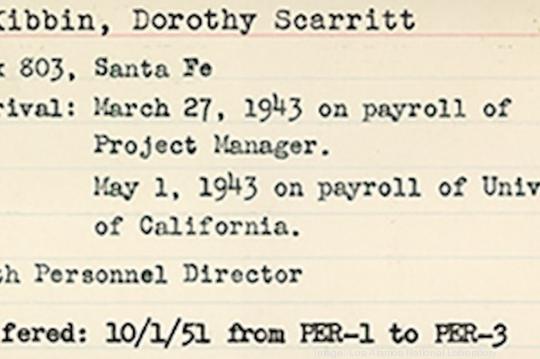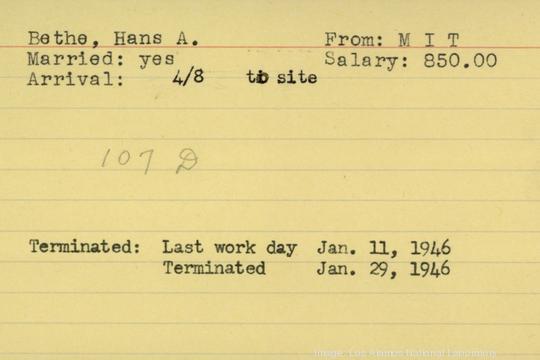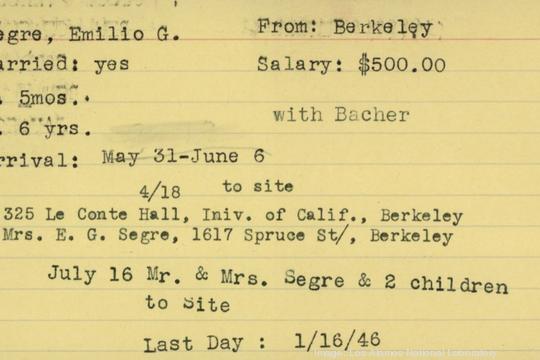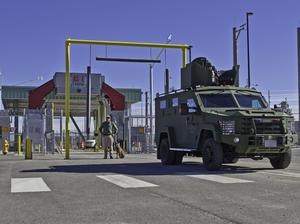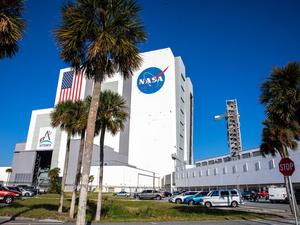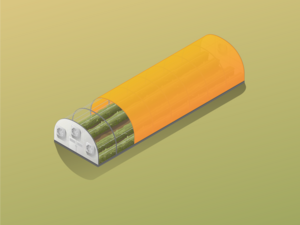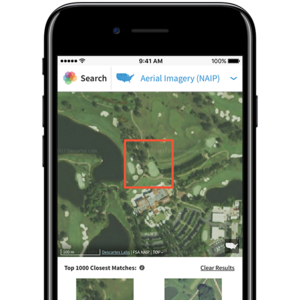The Manhattan Project represents one of the largest military projects in U.S. history. Yet, when it started, nobody knew it by that name — not even the plethora of influential scientists who traveled to New Mexico from all over the world to work on it.
They knew the project simply as "Project Y" — a secretive codename for an effort carrying out even more secretive work.
Secrecy extended past the name of the project itself. Military chiefs needed a spot to handle some of the most advanced research as part of Project Y, and they landed on a site in northern New Mexico — now called Los Alamos.
But no one called it that when the Los Alamos National Laboratory first sprung up about 30 miles north of Santa Fe in 1943. It was simply an unnamed lab where some of the greatest minds in the history of science would come to help research and develop two weapons that had never been used in combat before and haven't been since.
"There was just this panoply of scientific all-stars that came here. And future all-stars were here as well," said Alan Carr, senior historian at Los Alamos National Laboratory.
Now, these "scientific all-stars" and other former staff at the renowned New Mexico lab have their history with the Manhattan Project — or "Project Y" — memorialized in a new digitized collection.
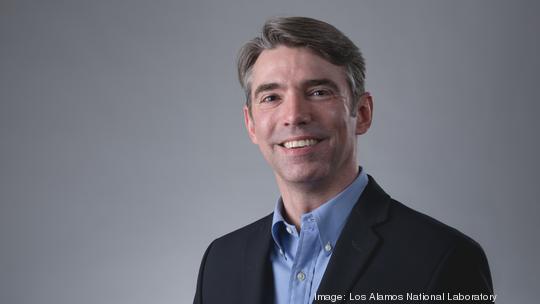
Past to present
A team in the National Security Research Center (NSRC) at New Mexico's Los Alamos National Laboratory spent one month digitizing over 10,000 personnel cards from staff who worked on the Manhattan Project. Digitizing the collection would allow archivists to access the almost 80-year-old cards electronically instead of having to physically handle the cards with each use, according to the lab's website.
The collection includes personnel cards from former Manhattan Project scientists, including Richard Feynman, Harold W. Agnew and — most infamously — J. Robert Oppenheimer. It also includes information on the slew of construction workers, metallurgists and other staff who worked at Los Alamos during the project.
The cards — called "McKibbin Cards" after Dorothy McKibbin, a former secretary at the lab who created them — include documented information like employee names, marital statuses and last days of work at the lab between 1943 and 1952.
Los Alamos National Laboratory digitized personnel cards
More than half a million people across the U.S. worked on the Manhattan Project. Los Alamos National Laboratory "designed, built, tested and helped deliver nuclear weapons in combat during the war," Carr, the lab's senior historian, said.
"That was our mission here," he said. "Since the Manhattan Project touched the lives of so many families, we have people regularly asking us about their family member.
"We have fragments, different pieces of evidence tying people to the laboratory at the time. … We want to be responsive to our public customers, just as we are to our internal customers," he added. "Because this is the most common question we get, we thought that it was important to scan those cards."
Foundation of innovation
And there's a good chance more people — not just family — could become interested in information about the Manhattan Project staff thanks to an upcoming blockbuster film. "Oppenheimer," set to be released next summer, details the life and work of J. Robert Oppenheimer during the Manhattan Project.
Oppenheimer was the executive director of Los Alamos National Laboratory during the project. He led over 1,500 staff at Los Alamos to research, test and create the two atomic weapons that would eventually be used against Japan at the end of World War II, Carr said.
There are numerous filming locations for "Oppenheimer" in New Mexico, including the Oppenheimer House and Fuller Lodge in Los Alamos and the Atchison, Topeka and Santa Fe Railway station in Lamy. The station was often the first stop in New Mexico for scientists and other staff traveling to the Los Alamos lab to work on the Manhattan Project.
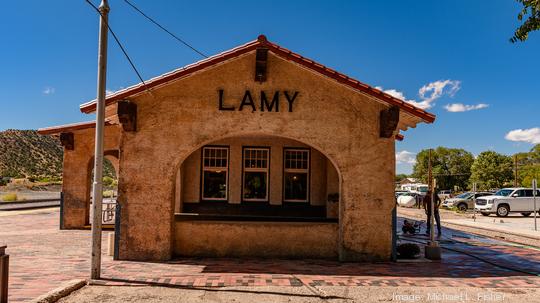
This groundswell of innovation during the Manhattan Project built a foundation for the current state of advanced technology and research conducted in New Mexico. The lab used White Sands Missile Range, an Army installation set up in 1942, to conduct a full-scale test of its nuclear weapon technology at the Trinity site. White Sands remains the testing site for government agencies like NASA and private entities like Boeing.
Sandia National Laboratories, which has its primary facility in Albuquerque, started as a wartime division at Los Alamos National Laboratory and now handles research in over a half-dozen different areas.
And that's not to mention companies like Ball Aerospace, Blue Halo, Raven Defense Corp. or Sol Oriens LLC. Those firms and many more have set up shop in New Mexico in order to find government contracts with the labs or through Kirtland Air Force Base, one of the largest Air Force bases in the U.S., located just south of Albuquerque.
Another example is Proof Labs, a company working to protect satellites from cyberattacks. It was co-founded by Dick Wilkinson, a retired Army project manager who directed a few research labs at Kirtland.
"Even back then, Los Alamos was leading the charge of research with the Manhattan Project. And everything that had anything to do with the military in New Mexico, for the most part, got pulled into that effort," Wilkinson said. "That's sort of Los Alamos's legacy, here, is that it probably energized the science research aspect of everything that was happening military-wide in New Mexico."
Proof Labs, which Wilkinson and co-founder Ricardo Aguilar established to solve a "niche problem" in space technology, acts as a "service provider back into that same military-industrial complex," Wilkinson said.
Scientific research conducted at Los Alamos for the Manhattan Project helped create this military service ecosystem in New Mexico that companies like Proof Labs and others were built on.
Future frontier
"It all falls under the: 'If you build it, they will come header,'" Wilkinson said. "Because there's a big investment from the federal side of the house in the military bases and the continued research, then that's how companies choose New Mexico to set up shop.
"They understand that the closer you are to your customer, the better service you can provide and usually the more business you're going to get," he continued.
And there's little sign that type of federal investment will slow down anytime soon, especially at Los Alamos. Although it gained most of its notoriety through the Manhattan Project, Carr said that the lab is currently in a "building phase," expanding its number of employees and research.
The National Security Research Center, which led the digitization project, has hired close to 40 new employees over the last three-and-a-half years, according to a spokesperson for the lab. NSRC right now includes around 50 people, Carr said, while the entire laboratory has close to 10,000 full-time equivalent employees and operated with a budget of just over $4 billion in fiscal year 2022, according to its website.
The research center contains over 14 million records spanning personnel information, results of previous experiments and other sensitive data, Carr said. But, he added, "the majority of them are not digitized yet."
"We are working toward that," he said. "It's very important to what we do."
Los Alamos uses stored records to inform future research, Carr said, in growing areas like cybersecurity and clean energy. While these research areas are expanding, it's been over three decades since the U.S. last conducted a full-scale nuclear test.
In this sense, the records on previous nuclear weapons research represent a valuable look into the country's nuclear history, Carr said.
"It is the only real-world data that we have, and likely that we'll ever have, that pertains to full-scale nuclear testing," he said. "Beyond these cards, our digitizers are scanning all kinds of records that directly translate into, I strongly believe, a safer and more sustainable future for the country and beyond."
